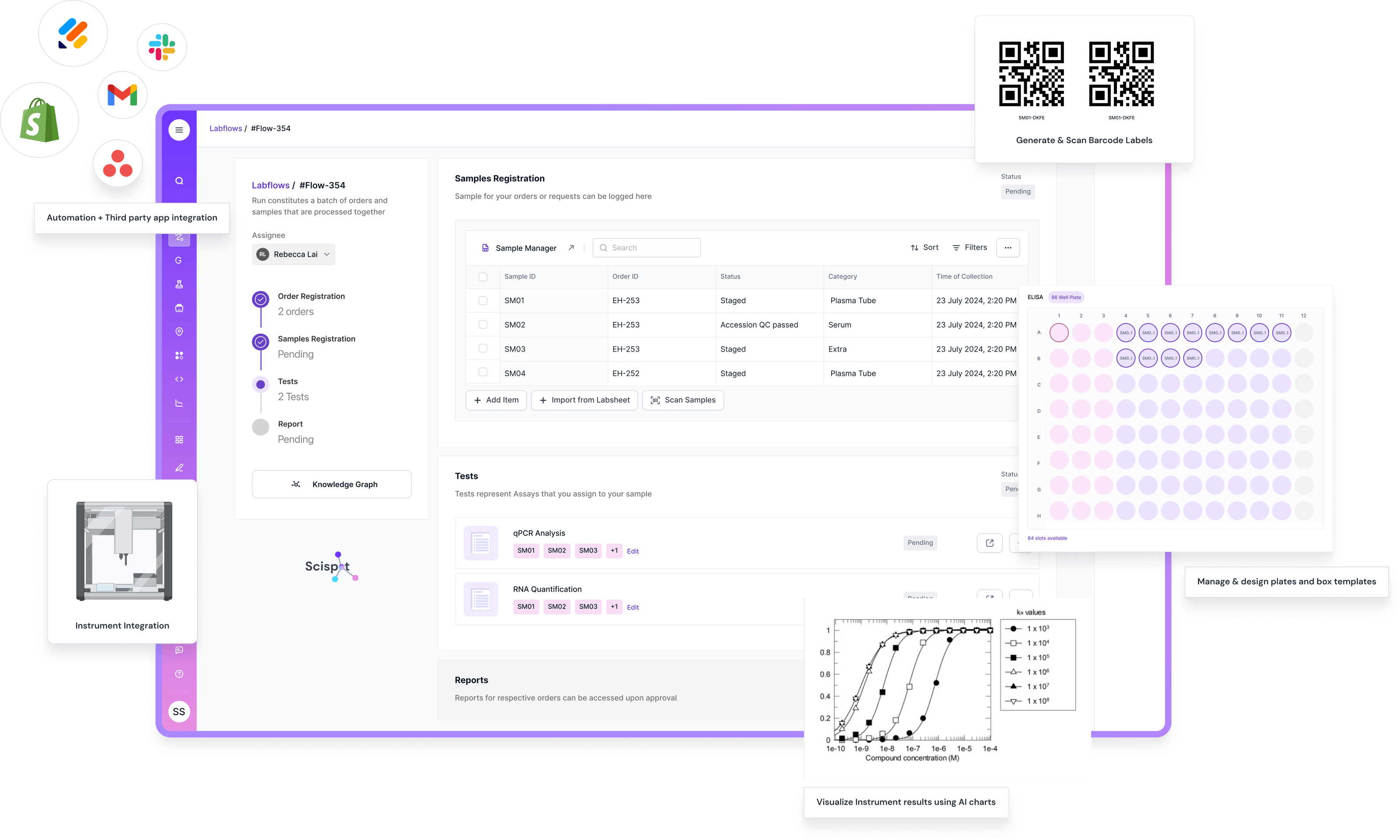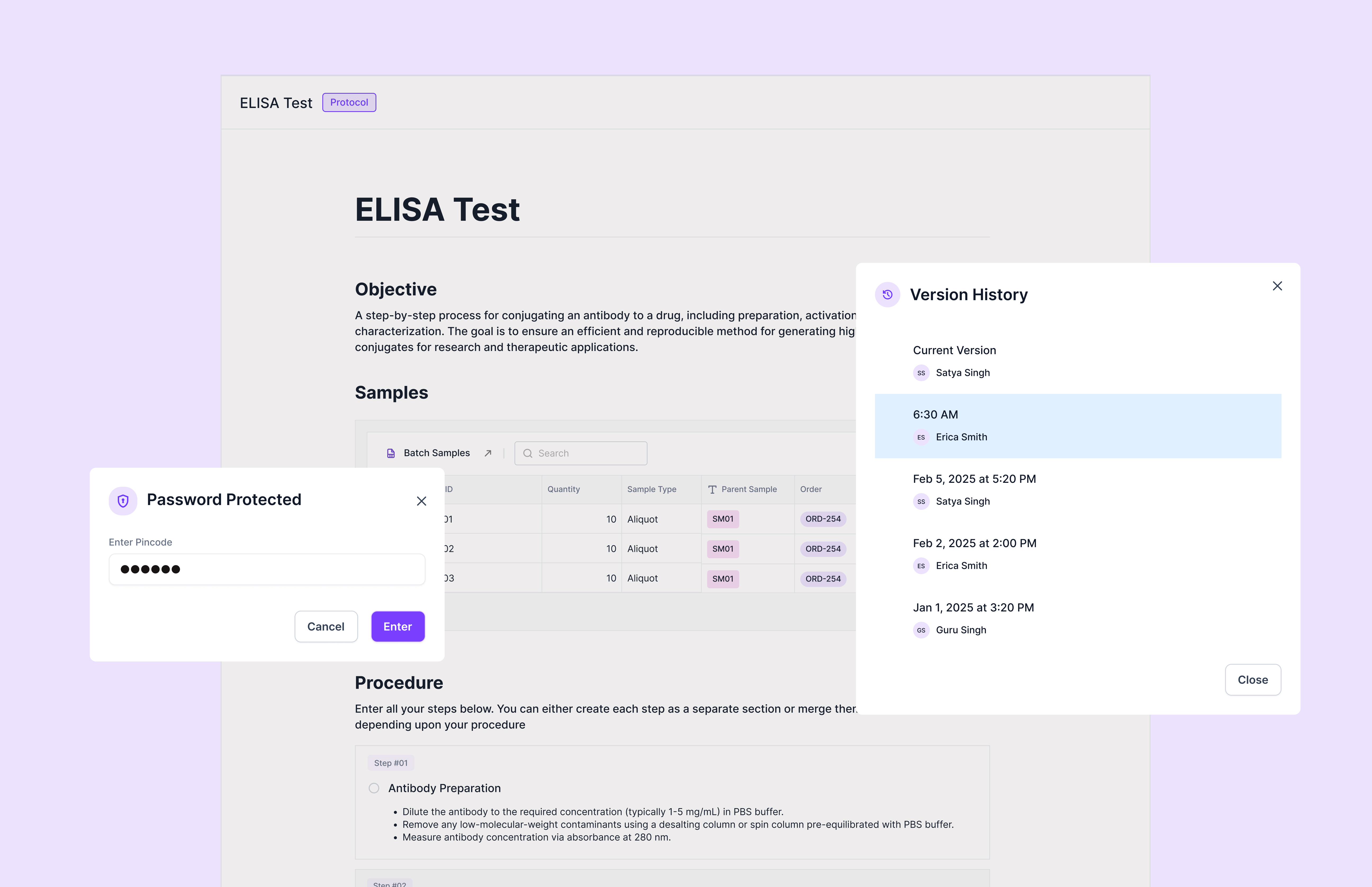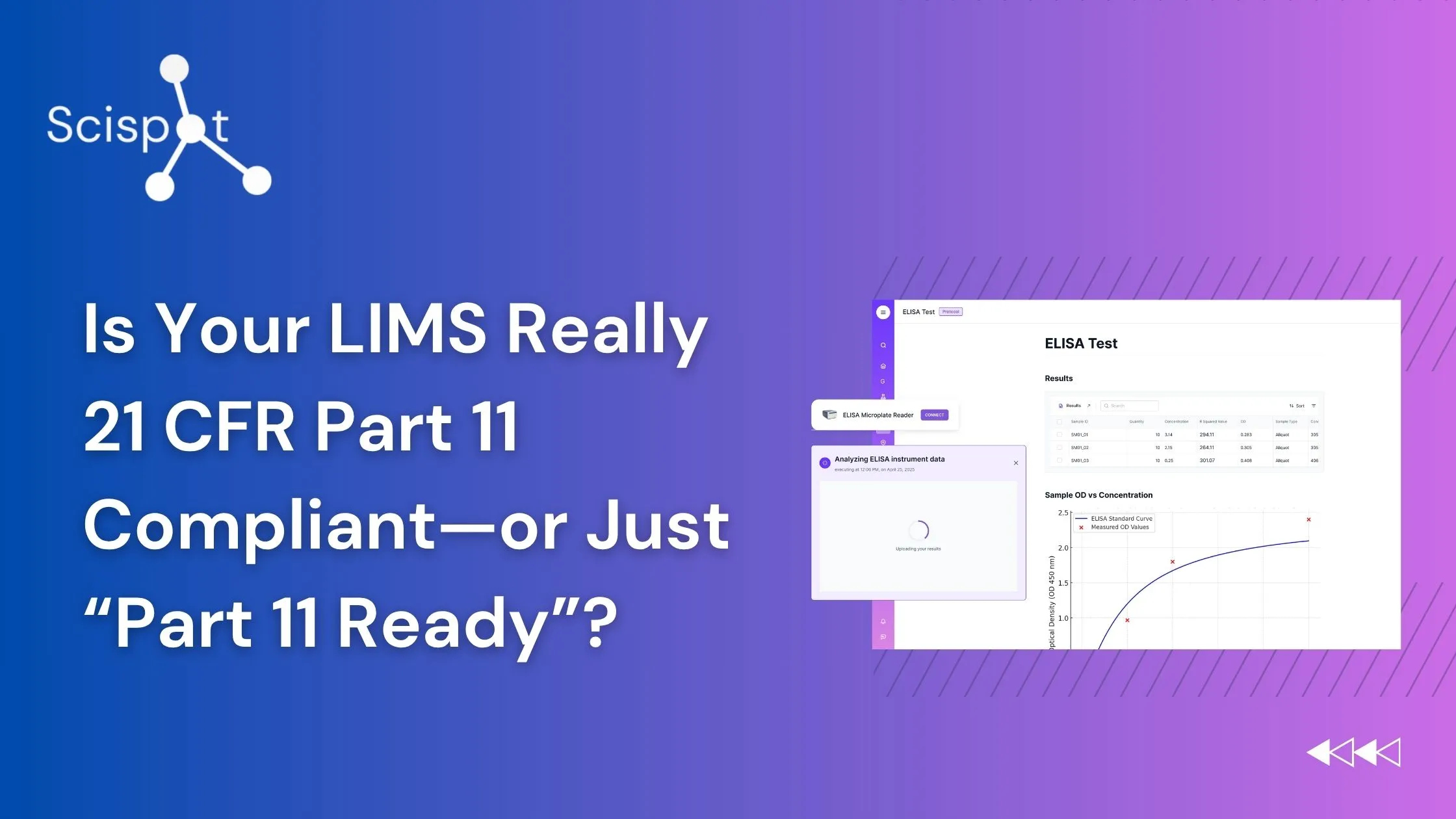Compliance in a regulated lab is not a simple software setting. It’s proof that your electronic records and electronic signatures (e-signatures) can withstand inspection by the U.S. Food and Drug Administration (FDA). Many platforms claim they are “Part 11 ready,” but that only means they include the necessary technical features. It does not mean your lab’s system, in its specific configuration, has been validated for its intended use and is operating under the right procedural controls. The difference between readiness and compliance is the difference between having the right tools and proving you’ve used them correctly.

What 21 CFR Part 11 Covers
Part 11 governs how electronic records and e-signatures are created, modified, maintained, archived, and submitted when those records fulfill FDA requirements under what are called predicate rules (the underlying regulations that specify which records must exist). If a record required by a predicate rule is stored or submitted electronically, Part 11 applies. If the record is only for convenience or internal use, it may not. Your validation plan should clearly identify which records are in scope and whether your LIMS operates as a closed system (where access is controlled by your organization) or an open system (where access is shared with external parties). Most labs use closed systems, which must meet the technical and procedural controls defined in Section 11.10 of the regulation.
What Inspectors Expect to See
Inspectors look for validation for intended use, meaning documented evidence that the system performs reliably and securely in your specific environment. They expect a computer-generated, time-stamped audit trail—a secure, tamper-proof log that records who performed each action and when, without overwriting prior entries. They check for signature manifestation, which shows the signer’s name, date, time, and meaning (such as “reviewed” or “approved”). They verify that e-signatures are linked to the record and cannot be copied or transferred. For non-biometric e-signatures, they expect two components (a user ID and a password) and robust password policies to prevent misuse. Auditors also review your training records, access control policies, and ability to make accurate and complete copies of records that remain readable throughout their retention period.

Why “Part 11 Ready” Falls Short
A vendor can offer all the right features—audit trails, e-signatures, role-based access—but that doesn’t make your system compliant. Compliance depends on your configuration, your standard operating procedures (SOPs), and your validation documentation. Think of a LIMS like a sports car. It may be built for speed, but you still need a licensed driver, road safety checks, and performance logs to prove it can handle the track. Validation is that proof—it shows your system is safe, reliable, and ready for real-world use.
Using a Modern, Risk-Based Validation Strategy
Most labs still use the Computerized System Validation (CSV) framework, which documents every stage of qualification: Installation Qualification (IQ) verifies that software and hardware are installed correctly, Operational Qualification (OQ) tests that each function works as intended, and Performance Qualification (PQ) confirms that the system performs reliably under real operating conditions.
Modern validation increasingly follows the Computer Software Assurance (CSA) approach introduced by the FDA. CSA emphasizes risk-based validation, focusing testing effort on functions that most affect product quality, patient safety, or data integrity. Low-risk functions can be tested more flexibly, while high-risk functions receive rigorous scripted testing. This method allows labs to move faster while staying compliant with regulatory expectations.
.jpeg)
Building Evidence That Tells a Story
Every validation effort should tell a clear story of control. Start by defining your User Requirements Specification (URS)—a document describing what you expect the system to do. Link each requirement to its associated risk. Then test and document how you mitigated that risk. Your evidence trail includes IQ, OQ, and PQ protocols with test results, a traceability matrix connecting requirements to tests, and a final validation report summarizing outcomes and residual risk. Support these with SOPs covering access management, password controls, audit log reviews, data backup and restore, document control, and change management. This full package satisfies the intent of Section 11.10(a), which requires validation for intended use and ongoing system control.
Proving Audit Trail and E-Signature Functionality
A simple test can demonstrate compliance. Have an analyst enter test results and attempt to approve them without credentials—the system should block this. Then approve using a valid ID and password, and verify that the record shows the signer’s name, timestamp, and signature meaning. Confirm that the signature cannot be separated from the record or reused elsewhere. Attempt to modify the approved record; the system should prevent it or create a new version with a corresponding audit entry showing who changed what and why. This test provides strong, easy-to-understand evidence of compliance with audit trail and signature requirements.

Including EU Annex 11 and ALCOA+ Principles
If your lab operates under European Union (EU) Good Manufacturing Practice (GMP), you must also comply with Annex 11 (Computerised Systems). Annex 11 focuses on infrastructure qualification, data integrity, and lifecycle management of computerized systems. Pairing Part 11 with Annex 11 ensures both technical and organizational controls are addressed. Additionally, following ALCOA+ principles—data that is Attributable, Legible, Contemporaneous, Original, Accurate, Complete, Consistent, Enduring, and Available—helps labs uphold global data integrity standards.
How Scispot Simplifies 21 CFR Part 11 Compliance
Scispot® offers the foundational controls required for compliant digital lab operations. It provides secure, tamper-proof audit trails that record every action, user, and timestamp. Its e-signature features display each signer’s name, date, time, and purpose, and are cryptographically bound to the record. Role-based access control prevents unauthorized actions, and built-in versioning ensures traceability across ELN (Electronic Lab Notebook), LIMS, and QMS (Quality Management System) modules.
With Scispot Validation Care, labs receive structured IQ, OQ, and PQ protocols, executed test scripts, traceability matrices, and continuous validation support. Each release is reviewed for impact, ensuring that your validation documentation evolves with the system. This turns validation into an ongoing process, not a one-time event, and reduces audit preparation time.
Scispot also unifies ELN, LIMS, and QMS workflows, minimizing the number of integrations your team must validate separately. Audit trails, approvals, and change control are all part of one environment, making compliance simpler to demonstrate and maintain.

Continuous Validation Over “One and Done”
Choosing to remain “Part 11 ready” may get you live faster, but it shifts risk to your next audit. Continuous validation, supported by automated testing and structured documentation, ensures your system remains compliant as it evolves. Scispot’s built-in controls and Validation Care service reduce the effort needed to maintain compliance while giving QA and regulatory teams peace of mind.
A Simple 12-Week Validation Plan
Many labs can reach a validated state within a quarter. The first two weeks focus on installation and security qualification (IQ). The next month covers operational qualification (OQ) of high-risk features like audit trails, e-signatures, and data exports. The final month tests performance qualification (PQ) using real data and users, then closes any deviations and finalizes reports. From there, periodic reviews and change control maintain compliance.
Tracking Compliance Effectively
Metrics help you stay proactive. Monitor how often audit log reviews occur, how many CAPAs (Corrective and Preventive Actions) arise from those reviews, and whether all records include proper signature manifestation. Measure how long change requests take to validate and how many configuration changes occur outside of SOPs. These indicators reveal whether your validation system is healthy or needs attention.
An Analogy for Data Integrity
Treat your audit trail like an aircraft’s black box. If it’s missing, editable, or incomplete, you can’t explain what happened. If it’s present, robust, and readable, you can defend every decision. That’s what regulators want to see—a reliable story of your data.
.gif)
Key Takeaways
Compliance is about evidence, not features. 21 CFR Part 11 applies when FDA predicate rules require electronic records or e-signatures. Inspectors look for validated systems that maintain audit trails, protect data integrity, and document control. Using risk-based validation under the FDA’s CSA framework allows labs to focus on what matters most. Scispot combines these principles into one platform—providing secure, validated workflows, audit-ready documentation, and continuous validation support that keeps your lab compliant without slowing science down.





.webp)
.webp)
.webp)



